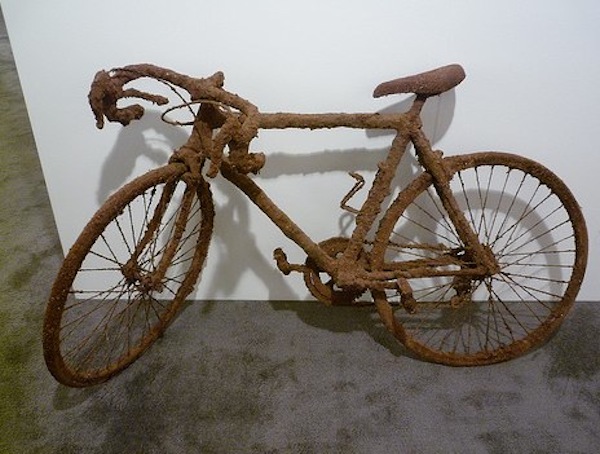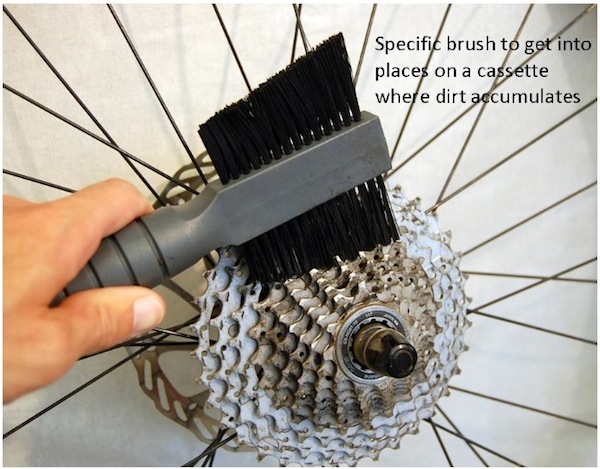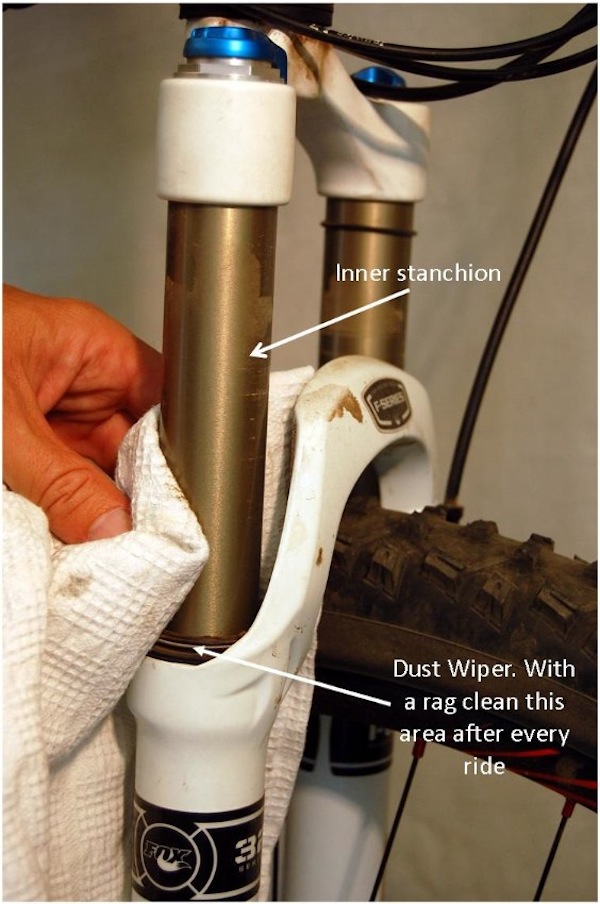How do I clean my new, shiny, beautiful bike?
It is a worthy question, as I think road bikes should ALWAYS be kept in perfect showroom condition; as clean as your jersey fresh from a bucket of Napisan.
The opposite is true for a mountain bike; a pristine, clean mountain bike just doesn't look quite right, although this bicycle disquised as a lump of tar is probably going too far.

One realisation I had after many years working in a bike shop is that people often don't know that bicycle chains are a consumable item, like tires and brake pads, and do require regular checking and replacing.
Riding a stretched and worn chain will lead to rapid wear on the cassette and chainrings and suddenly your repair bill will double. Riding with a dirty, gunky chain speeds up this process alarmingly.
Your local bike shop will be able to check chain wear in a matter of moments and replace if necessary.
With regular cleaning you can enhance the longevity of your bike and all its bits, so here are some simple steps to cleaning drivetrain components. These practices are for road and mountain bikes:
- Clean off the majority of dirt and mud with a light hosing (not high pressure). It is important to avoid spraying water into any sealed areas, particularly where bearings are present. For example: wheel hubs, the bottom bracket area, headset and suspension seals.
- Degreasing: I am not a fan of immersing a chain in degreaser. My recommendation is to clean regularly with a rag (wipe it down after every ride) and lube minimally to prevent dirt and gunk build up. Doing this can drastically reduce the need to thoroughly degrease, but sometimes it is unavoidable. Always use a non-corrosive cycling-specific product as they are usually more gentle on delicate components. Apply degreaser to the chain, allow a minute or two to break down the contaminates and wash off. If the chain is really bad, you may need to use a chain cleaner or brush to scrub off the black gunk as well. Wrap the chain in a rag (as shown) and rotate the cranks to finish cleaning.

- Using a cycling specific cleaning products and water, clean off the whole bike (I have actually used car wash many times on my bikes without any ill effects, but probably not the best practice). It is easy to do this with a large soft brush or sponge. There are also specific brushes available to clean cassettes and those hard to reach places.

- Wipe your bike down with a cloth to remove any water or moisture that may have pooled.
- When completely dry, re-lube the chain and you're done. Don't overlube! A wet, slippery chain has been loved with lube to death. Using the technique described above, grip a rag around the chain and rotate the cranks to clean off excess.
Some important points regarding mountain bikes:
- As mentioned, take care around suspension dust wipers. These are best cleaned with a damp cloth and not by spraying directly with water or degreaser! Keeping the inner stanchions clean will increase the longevity of the suspension system.

- It is also important to take care around disc brakes. Certain cleaning products and especially lubricants are not friendly to disc brake pads and rotors. If contaminated you will experience the most God-awful squeal whenever the brakes are applied (your riding mates will NOT be happy) and brake performance may be seriously compromised.
- A tip if you do accidently contaminate your disc brake pads: Remove the pads and burn off the contamination with a butane gas torch (like a chef uses to crisp a creme brulee). If unavailable, coat the pad with methylated spirits and set fire to it (best done on a non-flammable surface, like your concrete garage floor!). You may need to rough up the pad surface a bit as well, but these processes should work.
Any questions? Ask the BikeRoar crew. Collectively we have decades of experience working in bike shops and have seen it all. Happy cleaning!


